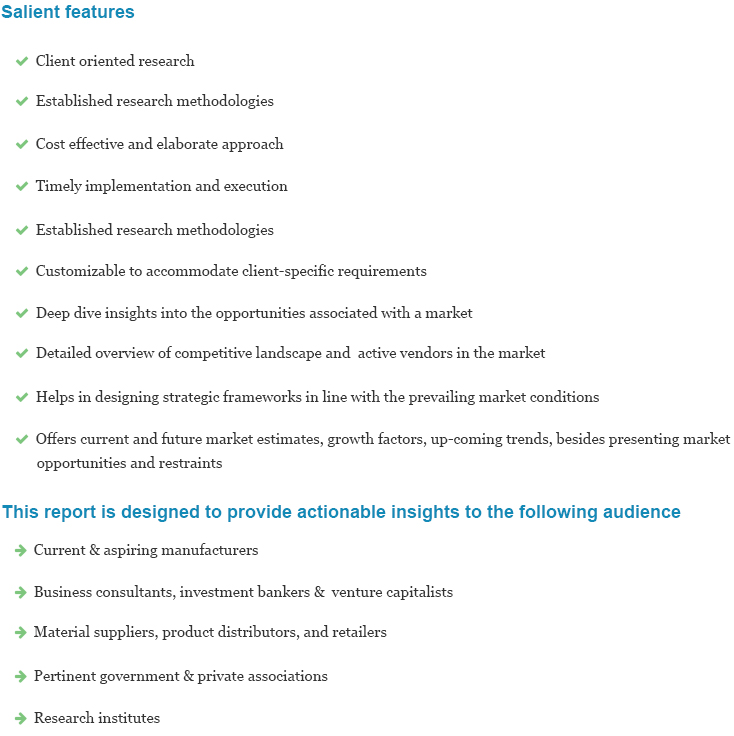
Global B2C E-Commerce Market Analysis, Market Size, Application Analysis, Regional Outlook, Competitive Strategies, And Forecasts, 2015 To 2025
- Published: August, 2017
- Format: Electronic (PDF)
- Number of pages: 70
- Industry: Communications Infrastructure
The global B2C e-commerce market is projected to expand at a healthy CAGR over the forecast period. The concept of B2C e-commerce evolves around organizations that sell their products and/or services online directly to the end-users. Increasing number of mobile and internet users in the emerging markets is one of the major factors driving the market growth. In addition, rising popularity of mobile commerce (m-commerce) along with advanced payment processing and shipping options is also likely to augment the market expansion. Another factor influencing the demand for B2C e-commerce is the ease of penetration it offers to manufacturers so that they can expand their product offerings into international or untapped markets.
It allows free entry and exit of the customers. The extended visibility that internet provides gives domestic businesses an edge over the market. It helps decrease cost related to establishing physical stores and sales platforms across the world. Other factors that are expected to boost demand for the market are 24/7 self-service shopping, various payment options (payment on delivery and payment through a portal), and easier access to a comprehensive range of products. Changing consumer preferences and increasing standards of living are key social factors that have a positively affected this market.
Increasing preference toward online shopping rather than visiting conventional brick and mortar stores is further adding pressure on manufacturers to develop an online portal to encourage the sale of their product. Moreover, decreasing costs of developing an online portal, adoption of multichannel retailing, and reduced transaction costs are also some important factors that are projected to drive the market in future. Electronic shopping and mail-order houses, clothing and accessories, office equipment and supplies, furniture and furnishing products, healthcare and cosmetics, books and music, home appliance, motor vehicle and parts dealers, building materials, garden equipment, and other consumer durables are the major end-use applications of the market.
Electronic shopping and mail-order houses segment accounted for the highest share of the market. The segment was driven by computer hardware products and systems. Clothing and accessories, office equipment and supplies, furniture and home furnishings, and appliances are projected to expand at a high CAGR during the forecast period. Services segment further includes information service (publishing, broadcasting, telecommunications, and providing an online information system), administrative support (travel arrangements and other linking services), and professional, scientific, and technical services.
The market can be segmented by strategy and operations into five main categories including direct sellers (e-tailers and manufacturers), online intermediaries (brokers and middlemen), advertising-based models, community-based models (a hybrid of two advertising approaches) and fee-based model (paid subscription and pay-as-you-buy services). Amazon, one of the world’s major companies in the online retailing industry, has divided its operations into, services (cloud computing and storage) and paid content category (app store and digital media), which has made it a leading player in the B2C e-commerce market.
Asia Pacific has been the largest regional market for B2C electronic commerce and this trend is expected to continue over the forecast period due to growing demand from China, India, and Indonesia. The consumption of goods and services offered by B2C e-commerce in China accounts for three-quarter of the production in the Asia Pacific region. The Asia Pacific market for B2C e-commerce is followed by North America, Europe, Latin America, and Middle East & Africa. Countries having the highest market share in this industry are China, Indonesia, India, Argentina, Italy, Canada, Brazil, Mexico, and Russia. Countries, such as Argentina and Japan, will experience a declining trend on account of currency volatility, which will ultimately reduce their spending in market.
Key companies have undertaken strategies such as collaborations and joint ventures to gain considerable market share and expand their product offering and distribution channels. In 2015, China’s leading online platform, JD.com Inc. entered into a joint venture with Otto Groups. The chief objective of this joint venture was to increase international presence in the e-commerce in China and Europe. PT Trikomsel Oke Tbk, a leading distributor and retailer of mobile phones in Indonesia, announced its joint venture with Singapore Post Limited to penetrate further into the regional market. The leading companies include Amazon.com, Inc.; JD.com, Inc.; Wal-Mart Stores, Inc.; eBay, Inc.; Otto Group; Alibaba Group Holding Ltd.; Cnova N.V.; Tesco PLC; and Best Buy Company, Inc.

Choose License Type
- World's largest premium report database
- Transparent pre & post sale customer engagement model
- Unparalleled flexibility in terms of rendering services
- Safe & secure web experience
- 24*5 Research support service
